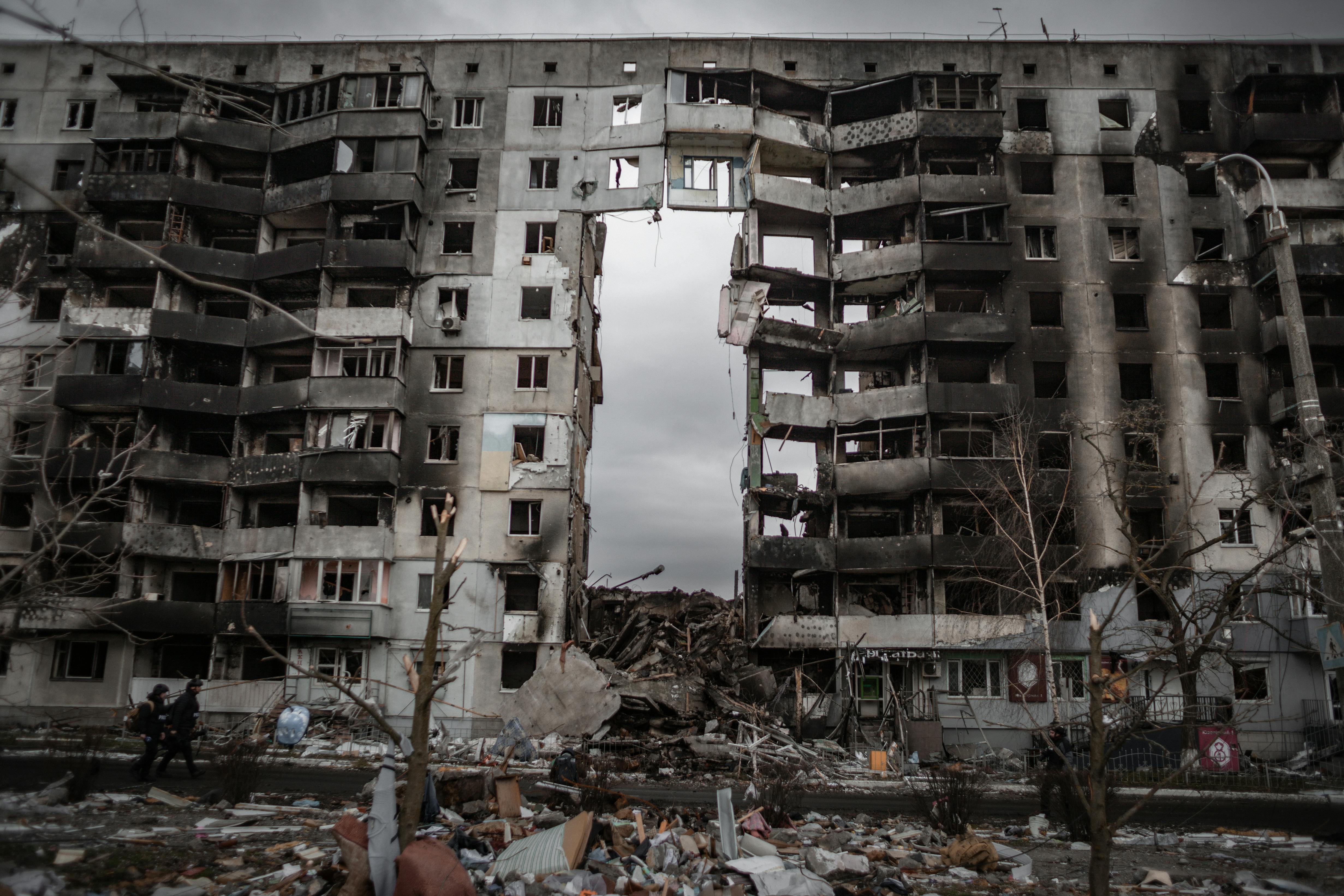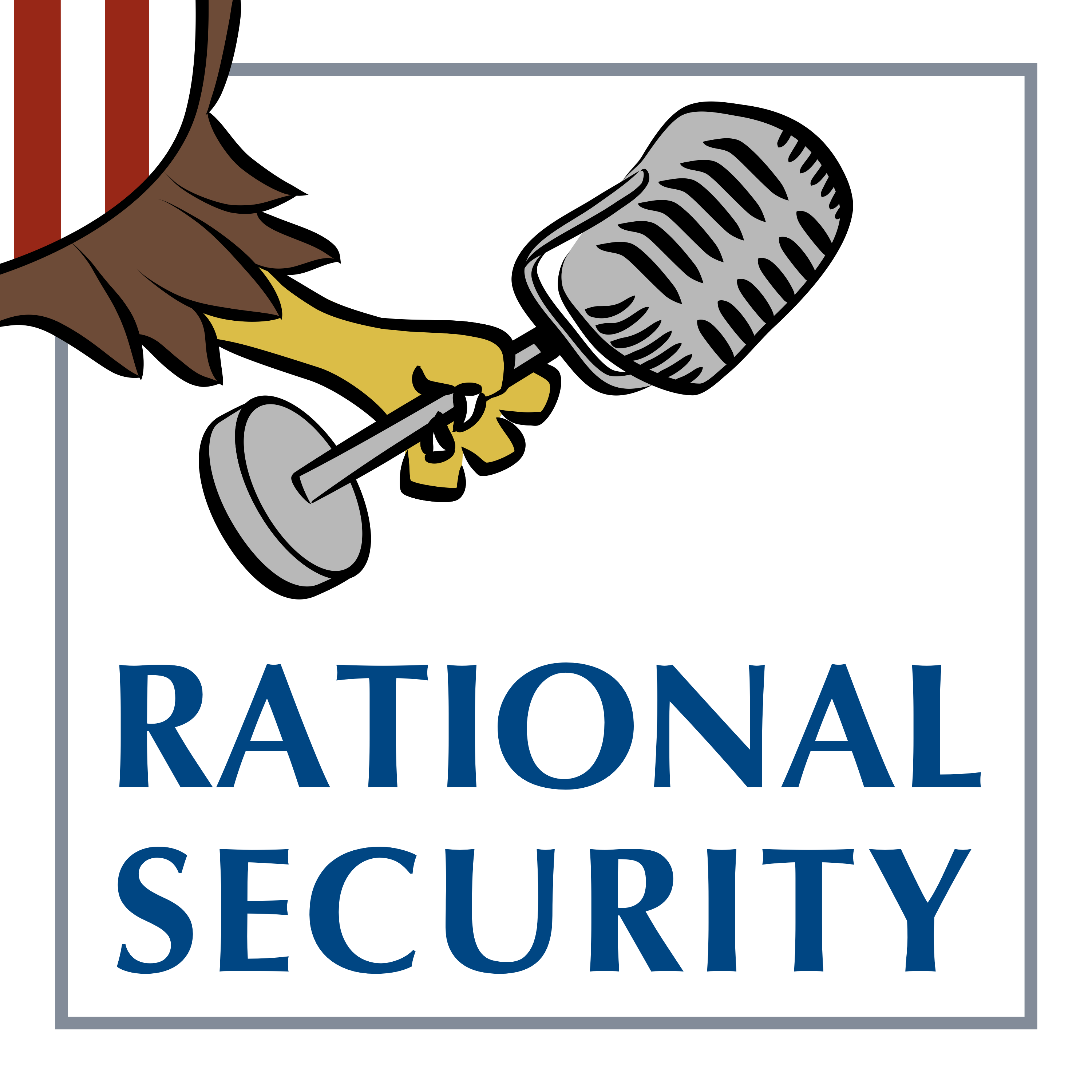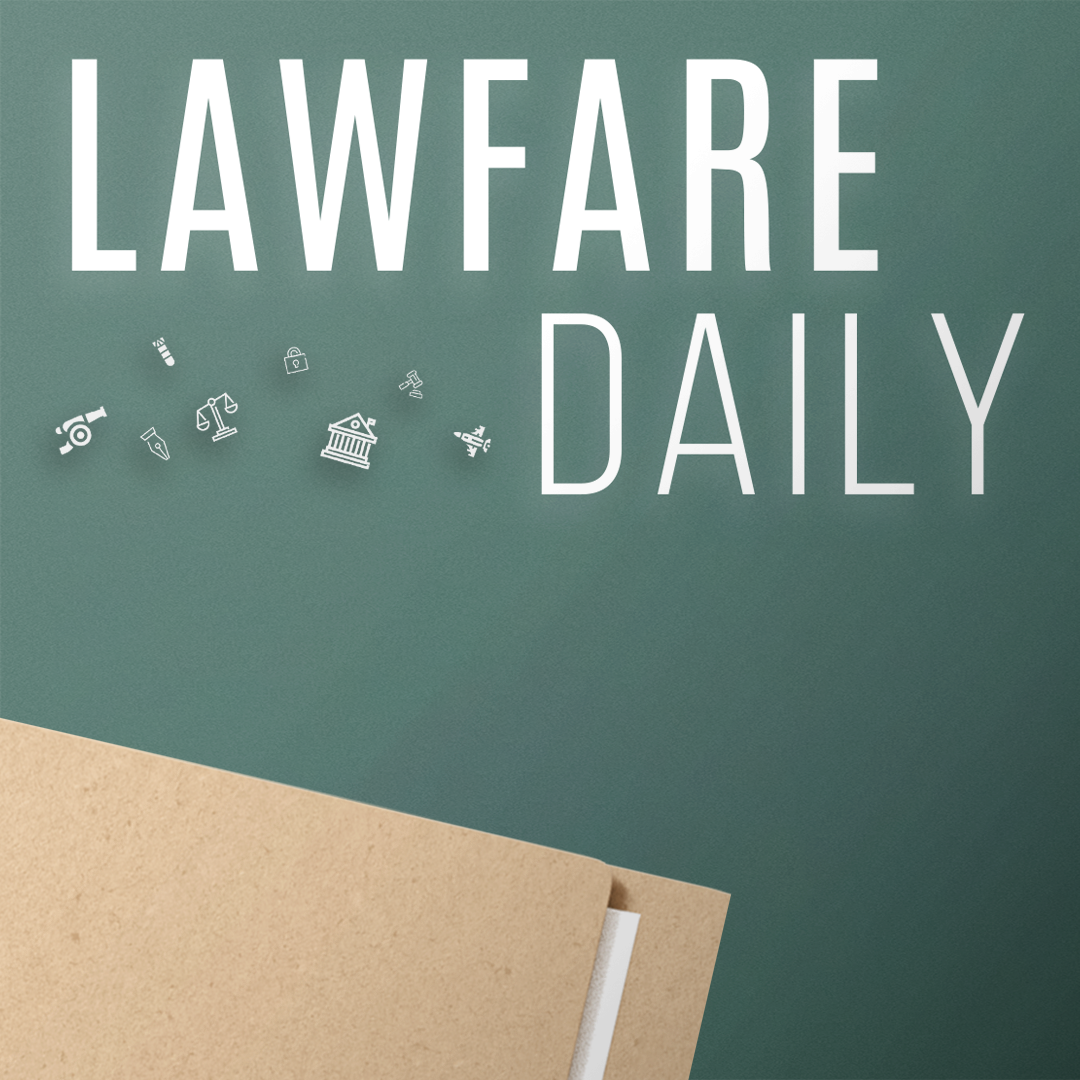Reparations May Be Within Reach in a Ukraine-Russia Deal
Historical precedent and financial leverage indicate a negotiated route to delivering reparations for civilian harm in Ukraine is possible.

Published by The Lawfare Institute
in Cooperation With

With the U.S. administration pushing for a third round of peace talks between Russia and Ukraine, the question of reparations for Ukraine is certain to be on the negotiating table. In the “final offer” the White House presented to Ukraine back in April, “compensation and assistance for rebuilding” were specifically included. Behind that blank formulation lies the devastating toll of conflict-related harm, including death, injury, arbitrary detention, torture, sexual violence, and property damage on a massive scale.
At the second round of talks with Russia in Istanbul last month, Ukraine reportedly presented a number of key principles for the negotiation. Adding important details to the White House’s earlier reference to compensation, the document specified: “Frozen Russian sovereign assets are used for reconstruction or remain frozen until reparations are paid.” While the equivalent Russian memorandum revealed the stark gap between the two countries’ official positions on the terms of peace—including control over Ukraine’s territory and future security—the reparations issue may be more amenable to compromise. Following initial talks between the U.S. and Russia in Saudi Arabia in February, it was reported that Russia might be willing to concede frozen assets to pay for Ukraine reconstruction. In fact, Russia’s past record on peace negotiations provides numerous examples of concessions on reparations.
Here we argue that reparations for conflict-related harm may be attainable in a future Ukraine-Russia peace deal. Russia has repeatedly been willing to include reparatory provisions in prior settlements across the post-Soviet space. While Russia will need to be held accountable for any promises it makes, international precedent provides promising indications of how frozen sovereign assets can be used to exert necessary leverage.
Legal Framework
Historically, war reparations were imposed by the victor on a defeated party to a conflict, but in contemporary international law, liability for reparations is a legal consequence of an internationally wrongful act. The International Law Commission Articles on the Responsibility of States specify that the “State responsible for an internationally wrongful act is under an obligation to compensate for the damage caused thereby, insofar as such damage is not made good by restitution.” No internationally wrongful act is more serious than an act of aggression, a violation of the UN Charter’s Article 2(4) prohibition on the use of force.
With regard to international humanitarian law (IHL), parties to conflict are liable to pay compensation for violations committed by their armed forces—a liability, notably, that cannot be negotiated away under a peace agreement. The UN Basic Principles and Guidelines on the Right to a Remedy and Reparation “identify mechanisms, modalities, procedures and methods for the implementation of existing legal obligations” regarding the right to reparation for victims of violations of human rights law and IHL, categorized as restitution, compensation, rehabilitation, satisfaction, and guarantees of non-repetition.
Applying these norms to the Russia-Ukraine conflict, in November 2022 the UN General Assembly agreed on Resolution ES-11/5 on “furtherance of remedy and reparation against aggression for Ukraine.” Pursuant to the resolution, which specifically recognized Russia’s UN Charter violations as well as violations of IHL and international human rights law, the Council of Europe has established an International Register of Damage for Ukraine, and a second round of negotiations have taken place to establish a Claims Commission, forming a comprehensive international compensation mechanism to ensure justice for victims of Russian aggression.
At the domestic level, the Ukraine government has set up a number of registers of persons who have suffered harm as a result of Russia’s armed aggression, provides limited social assistance for former prisoners of war and some civilian detainees, and recently established a scheme to award “interim reparations” to survivors of conflict-related sexual violence. These developments are detailed in a new report by Ceasefire Centre for Civilian Rights and the Eastern Ukrainian Center for Civic Initiatives, which argues that the lessons learned from Ukraine’s system of social protection for former detainees in the east—first established in 2018—will be important in ensuring that vulnerable civilian victims do not fall between the cracks in the rollout of any nationwide reparations programme.
While significant progress has been made at both international and national levels for delivering reparations at scale, their financing remains a stumbling block. Although strong arguments have been made for the repurposing of $300 billion in frozen Russian sovereign assets, authorities in European jurisdictions and the U.S. remain reluctant, whether on grounds of state immunity or the need to maintain trust in the international financial system. Furthermore, where agreement has been reached to use the interest generated from those assets, it has been directed primarily toward Ukraine’s military effort rather than reparations.
The challenge therefore remains: How to make Russia pay? The answer may be found in negotiations.
Russia’s Track Record: Reparatory Provisions in Past Peace Agreements
From the early years of the Russian Revolution to the 21st century, Russia has a long history of agreeing to provisions in peace agreements that include some degree of reparative or restorative language. That said, it is important to acknowledge that the current situation in Ukraine defies direct comparison. Several agreements cited below, such as those arising from the Georgian-Ossetian and Abkhaz conflicts, involved Russia acting (at least formally) as a third-party mediator or co-guarantor, rather than as a primary party to the conflict. The Chechen wars were non-international armed conflicts where Russia owed reparatory obligations to victims of violations under international human rights law, but inter-state liability for reparations did not arise. However, together the agreements do serve to challenge assumptions that reparations are alien to Russian legal diplomacy.
Baltic Peace Treaties
In 1920, Soviet Russia signed peace treaties with the Baltic states of Estonia (Treaty of Tartu, Feb. 2), Lithuania (Soviet-Lithuanian Peace Treaty, July 12), and Latvia (Treaty of Riga, Aug. 11). Concluded after the Baltic wars of independence, they recognized the sovereignty of the Baltic states and addressed matters such as compensation for war-related damage, return of property, and cultural restitution. Under the Treaty of Tartu, for example, Russia granted Estonia 15 million gold rubles and agreed to extensive moveable property restitution and the establishment of a joint commission to resolve real property disputes.
Georgia-Russia Agreement on Economic Restoration
As Georgia moved toward independence from the Soviet Union, a conflict broke out in 1990 in the Georgian region of South Ossetia, causing over a thousand deaths and displacing tens of thousands. Despite aiding the South Ossetian forces, Russia positioned itself as a neutral mediator to broker the 1992 Sochi Agreement. Under the subsequent Agreement between the Government of the Russian Federation and the Government of Georgia on the Restoration of the Economy in the Zone of the Georgian-Ossetian Conflict, Russia agreed to contribute 11.4 billion rubles to reconstruction of residential property and infrastructure as well as contributing to the return of refugees and restoration of their property rights.
Quadripartite Agreement on the Voluntary Return of Refugees and Displaced Persons
An even more devastating conflict followed Abkhazia’s move to declare independence from Georgia in 1992. At least 12,000 people were killed and some 250,000 ethnic Georgians forcibly displaced. A Quadripartite Agreement signed on April 4, 1994, by the Government of Georgia, the de facto authorities of Abkhazia, the Russian Federation, and the United Nations High Commissioner for Refugees (UNHCR) provided for the safe, secure, and dignified voluntary return of refugees and displaced persons to their homes in Abkhazia and established a quadripartite commission to oversee return and successful reintegration. In addition to basic material assistance for a period of up to six months and rehabilitation assistance, the agreement provided for the restitution of moveable and immoveable property to returnees or appropriate compensation for lost property where restitution was not feasible.
Khasavyurt Accords and Russian-Chechen Agreement of 1996
The First Chechen War of 1994-1996, fought between Russia and the Chechen Republic of Ichkeria, was the first large-scale conflict of the post-Soviet era to take place in Russia itself. The 1996 Khasavyourt Joint Declaration and Principles for Mutual Relations called for, among other things, the enactment by the Russian government of programs for the rebuilding of Chechnya’s socioeconomic infrastructure. The Russian-Chechen Agreement later that year stated that “[s]ocial and humanitarian issues will be addressed as a matter of immediacy, for which purpose … [m]easures will be implemented to pay compensation to persons who suffered in combat[.]”
As with the previous examples cited, these reparatory provisions were unenforceable and ultimately undermined by renewed conflict or political reversals. Analysts argue that Russia has historically used ceasefires to regroup, rearm, and improve its positioning, only to forsake agreements and strike back harder when conditions are more favorable. No doubt there is a serious risk of the same with any deal agreed now with Ukraine.
Nonetheless, the argument that Russia will never agree to pay reparations is belied by its legal history of agreeing to reparations provisions on multiple occasions. The historical examples explored above reveal that Russia is not categorically opposed to the inclusion of reparatory or restorative language in peace agreements, even when doing so risks creating political liabilities and financial burden.
In the context of the current conflict with Ukraine, however, it is clear that for Russia to commit to reparations on the scale required—and actually pay them—a source of sustained pressure will be required.
Leverage for Reparations
Ukraine’s insistence on linking the payment of reparations with the unfreezing of Russia’s sovereign assets is wise, not least because it can rely on a significant international precedent that directly involved the U.S.
The 1981 Algiers Declarations on relations between the U.S. and Iran are now remembered primarily for ending the hostage crisis at the U.S. Embassy in Tehran. In exchange for the release of 52 American hostages, the U.S. committed to ensuring the mobility and free transfer of all Iranian assets held within its jurisdiction, including $8 billion in Iranian central bank reserves that it had frozen. However, a central part of the deal was also the creation of the Iran-U.S. Claims Tribunal to adjudicate claims of the U.S. and U.S. nationals against Iran and of Iran; and Iranian nationals against the U.S. Nearly 4,000 cases were decided, with the amounts awarded to U.S. parties—totalling $2.2 billion—paid out of a security account held at the Dutch central bank. Iran was required to deposit an initial $1 billion in the account and then to replenish it once it fell below $500 million. Iran repeatedly met its financial obligation.
Using the leverage of frozen sovereign assets to unlock commitment to an international justice mechanism, the Algiers Declarations present an important precedent for how reparations for Ukraine can be legally realized.
Of the $300 billion in Russian sovereign assets currently frozen worldwide, the greater part—some 183 billion euros—is held in Europe, which has collectively taken a much tougher position on Russia than the Trump administration. On June 30, the EU renewed and strengthened its sanctions package for a further six months. Vladimir Putin knows that European resolve will be hard to break. Psychologically, he may already have written off the frozen assets, or regard their possible dedication to humanitarian purposes preferable to their being repurposed for Ukraine’s rearmament. Reuters quoted sources with knowledge of the discussions in Moscow indicating that the Kremlin might agree to the assets in their entirety being used to rebuild Ukraine, but with a significant proportion—possibly one-third—allocated to Russia-controlled parts of eastern Ukraine which have been devastated in over a decade of war.
In the context of ongoing negotiations toward a Ukraine-Russia peace agreement, there is a legal, strategic, and moral imperative to advocate for reparations for conflict harm. Using the frozen assets to guarantee a financing mechanism for reparations might represent the best opportunity available for delivering civil justice to a Ukrainian population that has suffered terribly. Back in summer of 2022, with the U.S. and Europe standing beside a determined Ukraine, the discussion on reparations was predicated on Russia’s defeat on the battlefield. Three years later, American support is in question and the frontlines are static and entrenched. Ukraine’s calculations have shifted accordingly, prompted partly by the White House. But long-standing Russian legal practice and international precedent indicate that a positive settlement on reparations remains within reach.
The Ceasefire Centre’s work on Ukraine reparations was supported by a grant from the Open Society Foundations. Opinions expressed in this article are those of the authors alone.


.jpg?sfvrsn=509f2911_3)

.jpg?sfvrsn=cb803a66_6)

